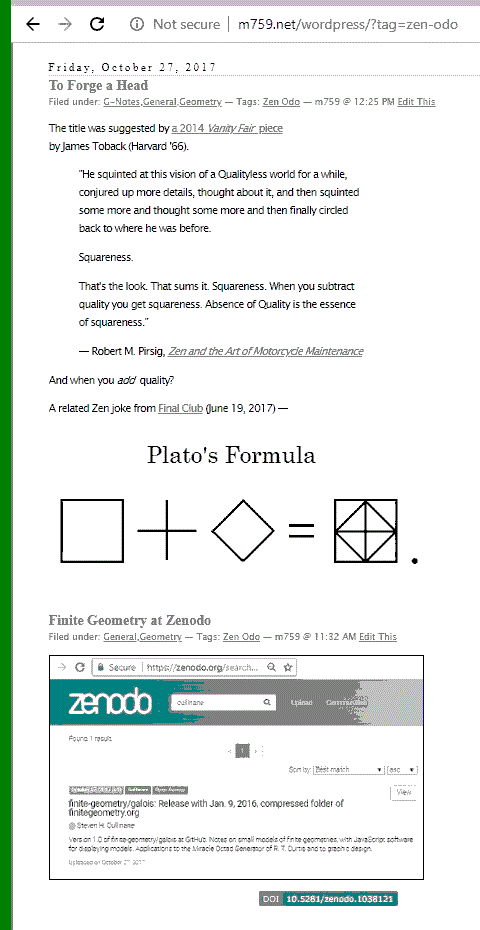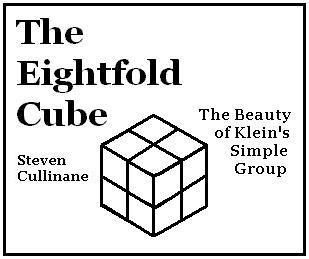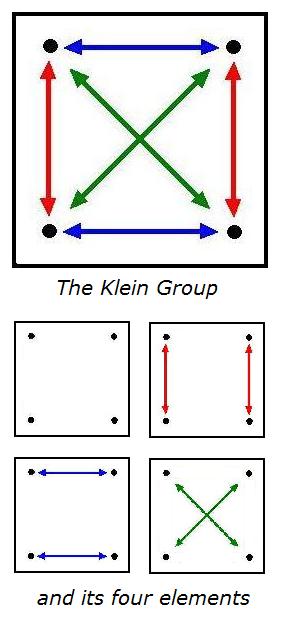Above, Hailee Steinfeld in a fanciful portrayal
of poet Emily Dickinson.
Thursday, March 12, 2020
Steinfeld as Rose the Hat
Language Games: Reflection
The conclusion of an elegy for George Steiner
in th Times Literary Supplement issue dated
March 13, 2020 —
"What distinguishes humans from other animals, Johann Gottfried Herder
suggested in his essay On the Origin of Language (1772), is not so much
their capacity for language as their capacity for arriving at general reflection
(Besonnenheit ) through language. Few thinkers of the postwar era can be
said to have pursued this reflection with as much range and rigour as George
Steiner.
Ben Hutchinson is Professor of European Literature at the University of Kent
and Director of the Paris School of Arts and Culture. His most recent book is
Comparative Literature: A very short introduction, 2018 ."
See as well . . .
Wednesday, March 11, 2020
Hunger Game for a “Pop Culture Star”
"A hunger to be more serious"
— Arts & Letters Daily on the late
George Steiner, who reportedly
died on February 3, 2020
The New York Times on a Sunday death —
A Midrash —
Serious —
Visualizing Mathieu Group Generators
Update of March 17, 2020 —
The graphic images illustrate nicely Conder's six 4-cycles, but
their relationship, if any, to his eight 2-cycles is a mystery —

The Conder paper is at
https://core.ac.uk/download/pdf/82622574.pdf.
Tuesday, March 10, 2020
Labeling a Cuboctahedron

The above arrangement of graphic images on cube faces is purely
decorative and static, and of little mathematical interest.
(A less static, but structurally chaotic, artifact might be made by
pasting the above 24 graphic images in the "Cosets in S4" picture
above onto the 24 faces of a 2x2x2 Rubik cube. This suggests the
reflection below on the poet Wallace Stevens, whose "Connoisseur
of Chaos" first appeared on page 90 of Twentieth Century Verse ,
Numbers 12-13, October 1938.)
If mathematically interesting permutations of the graphic images
are to be done, the images should be imagined as situated on
parallel planes, as in the permutahedron below —
Click the above permutahedron for an analysis of its structure.
Monday, March 9, 2020
“Archimedes at Hiroshima” Continues.
The title is from a post of January 10, 2019.
A figure from this journal on June 1, 2019 —
The following figure may help relate labelings of the
truncated octahedron ("permutahedron") to labelings
of its fellow Archimedean solid, the cuboctahedron.
See as well other posts tagged Aitchison.
The Bucharest Wheel
From the Bucharest author in last night's 12:12 AM post —
From this journal on the above date, Feb. 16, 2011 —
The Bucharest Cross
For fans of "The Zero Theorem" —
The 24 permutations of S4 arranged on a cube
by Cristi Stoica of Bucharest at
http://www.unitaryflow.com/2009/06/polyhedra-and-groups.html:
Sunday, March 8, 2020
Joyce and Einstein on the Beach
"Hello! Kinch here. Put me on to Edenville.
Aleph, alpha: nought, nought, one."
"A very short space of time through very short times of space….
Am I walking into eternity along Sandymount strand?"
— James Joyce, Ulysses , Proteus chapter
See also the previous post and Masks of the Illuminati .
Saturday, March 7, 2020
The “Octad Group” as Symmetries of the 4×4 Square
From "Mathieu Moonshine and Symmetry Surfing" —
(Submitted on 29 Sep 2016, last revised 22 Jan 2018)
by Matthias R. Gaberdiel (1), Christoph A. Keller (2),
and Hynek Paul (1)
(1) Institute for Theoretical Physics, ETH Zurich
(2) Department of Mathematics, ETH Zurich
https://arxiv.org/abs/1609.09302v2 —
"This presentation of the symmetry groups Gi is
particularly well-adapted for the symmetry surfing
philosophy. In particular it is straightforward to
combine them into an overarching symmetry group G
by combining all the generators. The resulting group is
the so-called octad group
G = (Z2)4 ⋊ A8 .
It can be described as a maximal subgroup of M24
obtained by the setwise stabilizer of a particular
'reference octad' in the Golay code, which we take
to be O9 = {3,5,6,9,15,19,23,24} ∈ 𝒢24. The octad
subgroup is of order 322560, and its index in M24
is 759, which is precisely the number of
different reference octads one can choose."
This "octad group" is in fact the symmetry group of the affine 4-space over GF(2),
so described in 1979 in connection not with the Golay code but with the geometry
of the 4×4 square.* Its nature as an affine group acting on the Golay code was
known long before 1979, but its description as an affine group acting on
the 4×4 square may first have been published in connection with the
Cullinane diamond theorem and Abstract 79T-A37, "Symmetry invariance in a
diamond ring," by Steven H. Cullinane in Notices of the American Mathematical
Society , February 1979, pages A-193, 194.
* The Galois tesseract .
Update of March 15, 2020 —
Conway and Sloane on the "octad group" in 1993 —

Thursday, March 5, 2020
“Generated by Reflections”
See the title in this journal.
Such generation occurs both in Euclidean space …
… and in some Galois spaces —
In Galois spaces, some care must be taken in defining "reflection."
Architect
Suggested by the previous post: "Garland is an architect of complicated stories and actual spaces."
— Adam Rogers, 7 AM March 4th, 2020,
https://www.wired.com/story/
inside-devs-dreamy-silicon-valley-quantum-thriller/.

See also The Reality Blocks.
Pythagorean Letter Meets Box of Chocolates
Friday, July 11, 2014Spiegel-Spiel des GeviertsFiled under: Uncategorized — m759 @ 12:00 PM See Cube Symbology.
|

Wednesday, March 4, 2020
What Part of NO Don’t You Understand?
The previous post addressed the "N" part.

For the "O" part, see Juliette Binoche in "High Life,"
a sequel to Kristen Stewart as bait in "Clouds of
Sils Maria" (2014) —
The Tackle —

Review
The minute in the previous post's timestamp
suggests a review —
See also Post-It Aesthetics
and posts tagged Story of N.
Architect’s Elegy
On Boston's Hancock Tower:
"I reflect that all art, all beauty, is reflection."
— Fictional character by John Updike (July 1976)
The architect of the tower reportedly died Monday.
See as well "Reflections: Disturbing the Universe I"
by the late Freeman Dyson in The New Yorker
issue dated August 6, 1979.
A reflection I prefer:

Tuesday, March 3, 2020
Corner
Ljubljana
Last night's 11:59 PM post linked to some news from Slovenia —
"Ulay, the performance artist whose provocative collaborations with
Marina Abramovic often led them to push each other to extremes,
died on Monday at his home in Ljubljana, Slovenia. He was 76."
— Alex Marshall in The New York Times
Ljubljana last appeared in this journal on August 10, 2011, in a post
titled "Objectivity."
A number related to that concept —
Euclid's Elements, Book I, Proposition 47.
Less objectively —
Monday, March 2, 2020
Key
— Performance artist who reportedly died today. See . . .
See also https://www.li-ma.nl/lima/sites/default/files/
Concept%20programme%20Transformation%20Digital%20Art%20Symposium
%2019%2620%20March%2C%202020%20-%20LIMA%20%283%29.pdf.
In Memoriam: Jack Welch, 1935-2020
What Are You?
What are you, 12?
I'm 8. What are you reading?
Just a Western.
What does that mean? Is it good?
Pretty good.
What's the story?
I haven't finished it yet.
[Link added.]
Read more: https://www.springfieldspringfield.co.uk/
movie_script.php?movie=once-upon-a-time-in-hollywood
Sunday, March 1, 2020
Same Staircase, Different Day
Freeman Dyson on his staircase at Trinity College
(University of Cambridge) and on Ludwig Wittgenstein:
“I held him in the highest respect and was delighted
to find him living in a room above mine on the same
staircase. I frequently met him walking up or down
the stairs, but I was too shy to start a conversation.”
Frank Close on Ron Shaw:
“Shaw arrived there in 1949 and moved into room K9,
overlooking Jesus Lane. There is nothing particularly
special about this room other than the coincidence that
its previous occupant was Freeman Dyson.”
— Close, Frank. The Infinity Puzzle (p. 78).
Basic Books. Kindle Edition.
See also other posts now tagged Trinity Staircase.
Illuminati enthusiasts may enjoy the following image:
Saturday, February 29, 2020
Potter’s Staircase

See as well "Up the Trinity Staircase" (yesterday afternoon)
and "British Pottery" (Log24 , December 22, 2018).
On the Night Road to Marfa
Template
|
Roberta Smith on Donald Judd’s BY ALEX GREENBERGER February 28, 2020 1:04pm If Minimalist artist Donald Judd is known as a writer at all, it’s likely for one important text— his 1965 essay “Specific Objects,” in which he observed the rise of a new kind of art that collapsed divisions between painting, sculpture, and other mediums. But Judd was a prolific critic, penning shrewd reviews for various publications throughout his career—including ARTnews . With a Judd retrospective going on view this Sunday at the Museum of Modern Art in New York, ARTnews asked New York Times co-chief art critic Roberta Smith— who, early in her career, worked for Judd as his assistant— to comment on a few of Judd’s ARTnews reviews. How would she describe his critical style? “In a word,” she said, “great.” . . . . |
And then there is Temple Eight, or Ex Fano Apollinis —

Cicero, In Verrem II. 1. 46 —
He reached Delos. There one night he secretly 46 carried off, from the much-revered sanctuary of Apollo, several ancient and beautiful statues, and had them put on board his own transport. Next day, when the inhabitants of Delos saw their sanc- tuary stripped of its treasures, they were much distressed . . . .
Delum venit. Ibi ex fano Apollinis religiosissimo noctu clam sustulit signa pulcherrima atque anti- quissima, eaque in onerariam navem suam conicienda curavit. Postridie cum fanum spoliatum viderent ii qui Delum incolebant, graviter ferebant . . . .
A Mass for Julia
"I know then that the story is there, buried in what I call
my magma. It’s absolute chaos but the novel is in there,
lost in a mass of dead elements, superfluous scenes
that will disappear or scenes that are repeated several
times from different perspectives, with different characters.
It’s very chaotic and makes sense only to me. But the story
is born under there."
— Mario Vargas Llosa, interviewed in The Paris Review ,
Issue 116, Fall 1990
Vargas Llosa is the author of "Aunt Julia and the Scriptwriter."

See also a Log24 search for "Seix Barral."
For scriptwriter-related remarks by one Julia Carmel in yesterday's online
New York Times , see an obituary about a Tuesday, Feb. 25, death.
See also Log24 posts from Tuesday, Feb. 25, now tagged Deutsche Schule .
To and Fro…
https://www.spectator.co.uk/2020/02/
the-restless-spirit-of-the-enlightenment/
See as well instances of "to and fro" in this journal.
Friday, February 28, 2020
Up the Trinity Staircase
Or: The Newman Prize Continues.
Freeman Dyson reportedly died today. In memoriam ,
some remarks by Dyson from Hiroshima Day 1979 —
(Click to enlarge.)
Thursday, February 27, 2020
Deep Space Odyssey
For Taylor Swift* as Dirk Pitt
Occult Writings
From the author who in 2001 described "God's fingerprint"
(see the previous post) —
From the same publisher —
From other posts tagged Triskele in this journal —
Other geometry for enthusiasts of the esoteric —
|
Monday, November 4, 2019
As Above, So Below*
|
|
|
Wednesday, February 26, 2020
“Perfect”
Usage example —
(Click to enlarge.)
See also the previous post as well as PG(3,2),
Schoolgirl Space, and Tetrahedron vs. Square.
Blockheads…
In Memoriam
"Dirk Pitt is a fictional character created by American novelist Clive Cussler
and featured in a series of novels published from 1976 to 2009. Pitt is a
larger-than-life hero reminiscent of pulp magazine icon Doc Savage."
"Algebra is the offer made by the devil to the mathematician."
— Sir Michael Atiyah, quoted here in Two Views of Finite Space.
Author Clive Cussler, who reportedly died Monday at 88 —
“I detested school,” he told Publishers Weekly in 1994.
“I was always the kid who was staring out the window.
While the teacher was lecturing on algebra, I was on
the deck of a pirate ship or in an airplane shooting down
the Red Baron.”
Related material —

Tuesday, February 25, 2020
Classics Illustrated
An image I saved on Oct. 26, 2016 —

Related New York Times opinion from that
same date —
"Every political movement in a democracy is
shaped like a pyramid — elite actors on the top,
the masses underneath."
Masks of the Illuminati:
The Sternheim Portrait (For Harlan Kane)
From last night's 1:01 AM post —

Detail —

This portrait is of German playwright Carl Sternheim.
Steve Martin's version of Sternheim's 1910 play "The Underpants"
reportedly opened on November 3, 2006.
My own interests on that date lay elsewhere . . .
Related abstract art —
Monday, February 24, 2020
Hidden Figure
For “Time Cube” Fans
Sunday, February 23, 2020
The Representation of Reality
"Although art is fundamentally everywhere and always the same,
nevertheless two main human inclinations, diametrically opposed
to each other, appear in its many and varied expressions. ….
The first aims at representing reality objectively, the second subjectively."
— Mondrian, 1936 [Links added.]
An image search today (click to enlarge) —
Saturday, February 22, 2020
Remembering Speechlessly
"Remembering speechlessly we seek
the great forgotten language . . . ."
|
"At the point of convergence by Octavio Paz, translated by Helen Lane
|
See also other posts now tagged Transparent Things.
Friday, February 21, 2020
To and Fro, Back and …
Also on January 27, 2017 . . .
For other appearances of John Hurt here,
see 1984 Cubes.
Update of 12:45 AM Feb. 22 —
A check of later obituaries reveals that Hurt may well
have died on January 25, 2017, not January 27 as above.
Thus the following remarks may be more appropriate:
Not to mention what, why, who, and how.
Thursday, February 20, 2020
In Memory of Jack Youngerman…
… An abstract artist who reportedly died at 93 yesterday.
A search in this journal for Shubnikov yields…
"Raiders of the Lost Stone" (December 26, 2017).
Once Upon a Time in Las Vegas
In Memory of Hunter S. Thompson
“Continue to exercise caution with stories that can only be
corroborated by dead guys."
— Intelligence officer Frank Anderson in the previous post.
Tale
“Continue to exercise caution with stories that can only be
corroborated by dead guys. Fabricated stories are almost
never made up out of whole cloth, but are made by stitching
together generally known facts with bits of uncheckable fantasy.”
— Intelligence officer Frank Anderson, who reportedly
died on January 27, 2020.
This journal on that date —
Wednesday, February 19, 2020
Aitchison’s Octads
The 759 octads of the Steiner system S(5,8,24) are displayed
rather neatly in the Miracle Octad Generator of R. T. Curtis.
A March 9, 2018, construction by Iain Aitchison* pictures the
759 octads on the faces of a cube , with octad elements the
24 edges of a cuboctahedron :
The Curtis octads are related to symmetries of the square.
See my webpage "Geometry of the 4×4 square" from March 2004.
Aitchison's p. 42 slide includes an illustration from that page —

Aitchison's octads are instead related to symmetries of the cube.
Note that essentially the same model as Aitchison's can be pictured
by using, instead of the 24 edges of a cuboctahedron, the 24 outer
faces of subcubes in the eightfold cube .
Image from Christmas Day 2005.
* http://www.math.sci.hiroshima-u.ac.jp/branched/files/2018/
presentations/Aitchison-Hiroshima-2-2018.pdf.
See also Aitchison in this journal.
Tuesday, February 18, 2020
For Rose the Hat
New Spaces: The Ninth Gate
"Nothing opens up new spaces…."
— Book description from the University of Chicago Press,
shown here on February Ninth, 2020:
See as well the Roman Polanski film "The Ninth Gate" and
an obituary reporting a death on February Ninth.
"… while at the end I didn't yearn for spectacular special effects,
I did wish for spectacular information–something awesome,
not just a fade to white." — Roger Ebert, March 10, 2000
Monday, February 17, 2020
Universal Beauty
Remarks by Rosalind Krauss in the previous post suggest a look at …
Then there is the universal beauty of oneself :
Jung's Four-Diamond Figure from Aion—

This figure was devised by Jung
to represent the Self.
RIP Charles Portis
See also "True Grid " in this journal.
|
Rosalind Krauss "If we open any tract– Plastic Art and Pure Plastic Art or The Non-Objective World , for instance– we will find that Mondrian and Malevich are not discussing canvas or pigment or graphite or any other form of matter. They are talking about Being or Mind or Spirit. From their point of view, the grid is a staircase to the Universal, and they are not interested in what happens below in the Concrete. Or, to take a more up-to-date example…."
"He was looking at the nine engravings and at the circle,
"And it's whispered that soon if we all call the tune
The nine engravings of The Club Dumas
An example of the universal— or, according to Krauss,
"This is the garden of Apollo, the field of Reason…." |
See as well . . .
Sunday, February 16, 2020
Saturday, February 15, 2020
Invisible Laws

"… And the song of love's recision . . . ." — E. L. Doctorow
Friday, February 14, 2020
Deeper Penetration
The title is a phrase by Einstein (see previous post).
Related material — Posts now tagged Declamation.
Math Woo
“Pure mathematics is, in its way, the poetry of logical ideas.
One seeks the most general ideas of operation which will
bring together in simple, logical and unified form the largest
possible circle of formal relationships. In this effort toward
logical beauty spiritual formulas are discovered necessary
for the deeper penetration into the laws of nature.”
— Albert Einstein, May 1, 1935, obituary for Emmy Noether
(Quoted in part, without source, in Quanta Magazine yesterday.)
Church Valentine…
Once Upon a Time in New Hampshire

See as well this journal on the above date,
in posts tagged "Semiotic Watchman."
Thursday, February 13, 2020
Zero Sum
The novel Zero Sum Game by S. L. Huang is reviewed in the
March 2020 Notices of the American Mathematical Society .
For the same novel in this journal, see posts tagged Berlekamp’s Game.
Square-Triangle Mappings: The Continuous Case
On Feb. 11, Christian Lawson-Perfect posed an interesting question
about mappings between square and triangular grids:
For the same question posed about non -continuous bijections,
see "Triangles are Square."
I posed the related non– continuous question in correspondence in
the 1980's, and later online in 2012. Naturally, I wondered in the
1980's about the continuous question and conformal mappings,
but didn't follow up that line of thought.
Perfect last appeared in this journal on May 20, 2014,
in the HTML title line for the link "offensive."
Goal
"So ist das Selbst auch das Ziel des Lebens…."
"The Self is our life's goal…."
— Carl Jung, as quoted and translated by Paul Bishop in
The Dionysian Self (de Gruyter, 1995, p. 344).
His goal, perhaps.
Happy birthday to Sophia Lillis, who turns 18 today.
Wednesday, February 12, 2020
The Reality Bond
Fano.space
The above new URL fano.space redirects to finitegeometry.org/sc.
Tuesday, February 11, 2020
Steam Heat (Pace Stephen King and Bob Fosse)
[Steam calliope plays] As a stationary object,
it always needs to be activated.
— Kara Walker at
Backstory —
See also this journal on the above "catastrophe" weekend.
Monday, February 10, 2020
Masks from Diagon Alley
Notes for Doctor Sleep
Or: Plato's Cave.
See also this journal on November 9, 2003 …
A post on Wittgenstein's "counting pattern" —

Carney Art
Gap Dance
But more, much more than that …

… She did it side ways.
In some earlier news from Development Hell —

See as well this journal's report of a death on that date.
Sunday, February 9, 2020
Build It And They Will …
Hors d’Oeuvre
From the May Day 2016 link above, in "Sunday Appetizer from 1984" —
The 2015 German edition of Beautiful Mathematics , a 2011 Mathematical Association of America (MAA) book, was retitled Mathematische Appetithäppchen — Mathematical Appetizers . The German edition mentions the author's source, omitted in the original American edition, for his section 5.17, "A Group of Operations" (in German, 5.17, "Eine Gruppe von Operationen")—
That source was a document that has been on the Web since 2002. The document was submitted to the MAA in 1984 but was rejected. The German edition omits the document's title, and describes it as merely a source for "further information on this subject area." |
From the Gap Dance link above, in "Reading for Devil's Night" —
“Das Nichts nichtet.” — Martin Heidegger.
And "Appropriation Appropriates."
Saturday, February 8, 2020
Multispeech
See the title in this journal. Related material —
"Aimee Lucido's New Yorker puzzle" (answers shown)
in Diary of a Crossword Fiend, and The Demolished Man
in this journal.

Friday, February 7, 2020
Correspondences
The 15 2-subsets of a 6-set correspond to the 15 points of PG(3,2).
(Cullinane, 1986*)
The 35 3-subsets of a 7-set correspond to the 35 lines of PG(3,2).
(Conwell, 1910)
The 56 3-subsets of an 8-set correspond to the 56 spreads of PG(3,2).
(Seidel, 1970)
Each correspondence above may have been investigated earlier than
indicated by the above dates , which are the earliest I know of.
See also Correspondences in this journal.
* The above 1986 construction of PG(3,2) from a 6-set also appeared
in the work of other authors in 1994 and 2002 . . .
-
Gonzalez-Dorrego, Maria R. (Maria del Rosario),
(16,6) Configurations and Geometry of Kummer Surfaces in P3.
American Mathematical Society, Providence, RI, 1994. -
Dolgachev, Igor, and Keum, JongHae,
"Birational Automorphisms of Quartic Hessian Surfaces."
Trans. Amer. Math. Soc. 354 (2002), 3031-3057.
Addendum at 5:09 PM suggested by an obituary today for Stephen Joyce:
See as well the word correspondences in
"James Joyce and the Hermetic Tradition," by William York Tindall
(Journal of the History of Ideas , Jan. 1954).
Thursday, February 6, 2020
Wednesday, February 5, 2020
Dialectic for Leftists
“The dialectic is the play that the last instance opens up
between itself and other ‘instances’, but this dialectic is
materialist: it is not played out up in the air, it is played out
in the play opened up by the last instance, which is material.”
— Louis Althusser, as quoted by Christopher Bray at
https://thecritic.co.uk/issues/february-2020/inveterate-ignoramus/
See also Althusser in this journal.
Appropriation Appropriates*
* A weblog motto. See …
http://enowning.blogspot.com/
2007/07/alfred-denkers-dictionary-on-ereignis.html.
That Ereignis post is dated July 3, 2007.
Related material for the Church of Synchronology —
"The deepest strain in a religion is the particular
and particularistic doctrine it asserts at its heart,
in the company of such pronouncements as
‘Thou shalt have no other Gods before me.’
Take the deepest strain of religion away…
and what remains are the surface pieties —
abstractions without substantive bite —
to which everyone will assent
because they are empty, insipid, and safe."
— Stanley Fish, quoted here on July 3, 2007…
The opening date of the film "Transformers."
The opening pronouncement of "Transformers" —
Tuesday, February 4, 2020
Behind the Babble
From a New York Times obituary today recounting
the life of a psychoanalyst who reportedly died at 94 on
January 16 —
"Dr. Shengold began treating Dr. Sacks in 1966 for
an amphetamine addiction. He continued to see him for
nearly a half-century.
'Above all, Shengold has taught me attention,'
Dr. Sacks said in an interview in 2012 for the website
Web of Stories, an archive of stories told by prominent
scientists and other people. 'And what is sometimes
called listening with a third ear — listening to what is
behind the babble.' "
The New Yorker, issue dated July 23, 2007, page 42:
“While out-of-body experiences have the character of
a perceptual illusion (albeit a complex and singular one),
near-death experiences have all the hallmarks of mystical
experience, as William James defines it….”
— Oliver Sacks,“A Bolt from the Blue”
The New Yorker, same issue, page 70:

Cleavage
From Martin Heidegger's
Contributions to Philosophy (From Enowning) ,
Translated by Parvis Emad and Kenneth Maly,
Indiana University Press, 1999 (first published in German
in 1989 as Beiträge zur Philosophie (Vom Ereignis) but
written in 1936-1938 —
"The 'between' [das Zwischen ] is the simple 'bursting open'
that enowns be-ing to a being, which up until then is held back
from what is ownmost to it and is not yet to be named a being.
This 'bursting open' is the clearing for the sheltered. But the
'bursting open' does not disperse. and the clearing is not a mere
emptiness.
The 'between' [das Zwischen ] which bursts open gathers
what it removes into the open of its strifing and refusing
belongingness, moves unto the ab-ground , out of which everything
(god, man, world, earth) recoils in swaying into itself and thus leaves
to be-ing the unique decidedness of en-ownment."
— 270, "The Essential Sway of Be-ing" (p. 341)
"Enownment and enstrifing, historical grounding and decision,
uniqueness and the onefold, what has the character of
the between [Zwischenhafte ] and the cleavage [Geklüft ] —
they never name the essential sway of be-ing as properties
but rather in each case the whole essential swaying* of its essential
sway."
— 270, "The Essential Sway of Be-ing" (p. 342)
* For "swaying" as "unfolding," see (for instance)
the Stanford Encyclopedia of Philosophy and
also George Kovacs, Thinking and Be-ing in Heidegger's
Beiträge zur Philosophie (Vom Ereignis) ,
Zeta Books, 2015.
A Kuhnian Ashtray, or “Welcome to the Institute”
The previous post suggests other Kuhnian remarks.
The Institute of the above title is not the one recently imagined
by Stephen King, but the one associated with a mathematician
who died on January 26 (Paul Newman's birthday).
For the Ashtray, see Ash Wednesday Surprise (March 9, 2011) and
https://opinionator.blogs.nytimes.com/
2011/03/06/the-ashtray-the-ultimatum-part-1/.
Monday, February 3, 2020
A Kuhnian Register
Ereignis in the Stanford Encyclopedia of Philosophy —
|
Further aspects of the essential unfolding of Being are revealed by what is perhaps the key move in the Contributions—a rethinking of Being in terms of the notion of Ereignis, a term translated variously as ‘event’ (most closely reflecting its ordinary German usage), ‘appropriation’, ‘appropriating event’, ‘event of appropriation’ or ‘enowning’. (For an analysis which tracks Heidegger's use of the term Ereignis at various stages of his thought, see Vallega-Neu 2010). The history of Being is now conceived as a series of appropriating events in which the different dimensions of human sense-making—the religious, political, philosophical (and so on) dimensions that define the culturally conditioned epochs of human history—are transformed. Each such transformation is a revolution in human patterns of intelligibility, so what is appropriated in the event is Dasein and thus the human capacity for taking-as (see e.g., Contributions 271: 343). Once appropriated in this way, Dasein operates according to a specific set of established sense-making practices and structures. In a Kuhnian register, one might think of this as the normal sense-making that follows a paradigm-shift. — Michael Wheeler, 2011 |
See as well "reordering" in Sunday evening's post Tetrads for McLuhan
and in a Log24 search for Reordering + Steiner.
Notification
See as well a Steiner book cover in Art Space, a post of May 7, 2017.
Ereignis*
A sequel to Xmas Eve 2019 —
* "Ereignis appears in Heidegger's later works
and is not easily summarized." — Wikipedia
Sunday, February 2, 2020
Tetrads for McLuhan, or “Blame It on Video”
"I like to put people on myself by skipping logical steps
in the conversation until they're dizzy." — Jemima Brown
in The Eiger Sanction
Related posts — See "McLuhan Tetrad" in this journal.
Related theology — See "The Meaning of Perichoresis."
Background — The New Yorker , "On Religion:
Richard Rohr Reorders the Universe," by Eliza Griswold
on February 2, 2020, and a different reordering in posts
tagged Eightfold Metaphysics.
Game of Shadows
“Krauss, Portman; Portman, Krauss.”
Prominent in the oeuvre of art theorist Rosalind Krauss, the Klein group
is a four-element group named for Felix Christian Klein.
It is commonly known as the four-group.
Mathematicians sometimes call this group
"V," for its German name, Vierergruppe .
For those who prefer narrative to mathematics —

Saturday, February 1, 2020
Varda at the Brattle, or “Aion: The Prize”
Today's Brattle Theatre films celebrate the work of Agnès Varda.
A search for Varda in this journal in turn suggests a search for
Aion-related posts.
Within that search, the post "Icons" (Sept. 16, 2011) is not unrelated
to yesterday's post "Notes for a Blue Guitar."
All this is, of course, mere dreamlogic .
Friday, January 31, 2020
Notes for a Blue Guitar
Gravatar at the weblog of Peter J. Cameron —
Same Gravatar in blue —
![]()
Synchronology check —
Click Lukasiewicz for further remarks.
Thursday, January 30, 2020
Poster Boy

Cover Design: Will Staehle / Unusual Co.
This post is in memory of "Wes Wilson, Psychedelic Poster Pioneer,"
who died at 82 on January 24, according to the NY Times today.
Related material — This journal on January 24.
Wednesday, January 29, 2020
The 2013 Simplicity Conference…
… is reviewed by the American Mathematical Society (AMS) in
the February 2020 issue (online Jan. 27) of the AMS Notices :
See as well Simplicity Conference in this journal.
The Newman Prize
From "Point," a Log24 post on St. Andrew's Day 2012 —
"….mirando il punto 
a cui tutti li tempi son presenti"
— Dante, Paradiso , XVII, 17-18
 For instance…
For instance…
Related material —
Jewel-Box* Song
|
From University Diaries by Margaret Soltan Farewell mein Lieber herr Goodbye mein Lieber herr It was a fine affair but now it's over And though we made you Chair You're not allowed to share We're better off without you mein herr Your talent was a Thousand Talents wide mein herr Your chemistry with China mesmerized mein herr It's really no surprise to find you lied mein herr But that's why FBI Watched you spy... |
* See "Jewel Box" in this journal.
On the Road
From Mosaic Logic, a post of September 3, 2017 —
“Lord Arglay had a suspicion that the Stone would be
purely logical. Yes, he thought, but what, in that sense,
were the rules of its pure logic?”
—Many Dimensions (1931), by Charles Williams

Tuesday, January 28, 2020
Once Upon a Time in Laurel Canyon
In memory of a screenwriter who reportedly died today —
“Ms. Frank… lived in Laurel Canyon in the Hollywood Hills….”
— The New York Times today
“Here, under the shadow of the great tree, I have found peace.”
— Mike Nichols in 1965
The Varieties of Transformative Experience
Very Stable Kool-Aid
Two of the thumbnail previews
from yesterday's 1 AM post …
Further down in the "6 Prescott St." post, the link 5 Divinity Avenue
leads to …
|
A Letter from Timothy Leary, Ph.D., July 17, 1961
Harvard University July 17, 1961
Dr. Thomas S. Szasz Dear Dr. Szasz: Your book arrived several days ago. I've spent eight hours on it and realize the task (and joy) of reading it has just begun. The Myth of Mental Illness is the most important book in the history of psychiatry. I know it is rash and premature to make this earlier judgment. I reserve the right later to revise and perhaps suggest it is the most important book published in the twentieth century. It is great in so many ways–scholarship, clinical insight, political savvy, common sense, historical sweep, human concern– and most of all for its compassionate, shattering honesty. . . . . |
The small Morton Prince House in the above letter might, according to
the above-quoted remarks by Corinna S. Rohse, be called a "jewel box."
Harvard moved it in 1978 from Divinity Avenue to its current location at
6 Prescott Street.
Related "jewel box" material for those who
prefer narrative to mathematics —
"In The Electric Kool-Aid Acid Test , Tom Wolfe writes about encountering
'a young psychologist,' 'Clifton Fadiman’s nephew, it turned out,' in the
waiting room of the San Mateo County jail. Fadiman and his wife were
'happily stuffing three I-Ching coins into some interminable dense volume*
of Oriental mysticism' that they planned to give Ken Kesey, the Prankster-
in-Chief whom the FBI had just nabbed after eight months on the lam.
Wolfe had been granted an interview with Kesey, and they wanted him to
tell their friend about the hidden coins. During this difficult time, they
explained, Kesey needed oracular advice."
— Tim Doody in The Morning News web 'zine on July 26, 2012**
Oracular advice related to yesterday evening's
"jewel box" post …
A 4-dimensional hypercube H (a tesseract ) has 24 square
2-dimensional faces. In its incarnation as a Galois tesseract
(a 4×4 square array of points for which the appropriate transformations
are those of the affine 4-space over the finite (i.e., Galois) two-element
field GF(2)), the 24 faces transform into 140 4-point "facets." The Galois
version of H has a group of 322,560 automorphisms. Therefore, by the
orbit-stabilizer theorem, each of the 140 facets of the Galois version has
a stabilizer group of 2,304 affine transformations.
Similar remarks apply to the I Ching In its incarnation as
a Galois hexaract , for which the symmetry group — the group of
affine transformations of the 6-dimensional affine space over GF(2) —
has not 322,560 elements, but rather 1,290,157,424,640.
* The volume Wolfe mentions was, according to Fadiman, the I Ching.
** See also this journal on that date — July 26, 2012.
Monday, January 27, 2020
Jewel Box
The phrase "jewel box" in a New York Times obituary online this afternoon
suggests a review. See "And He Built a Crooked House" and Galois Tesseract.
A Line for Rose the Hat
"Hum a few bars, Steely Dan."

Related material — "For 6 Prescott Street" and "SAT."
_________________________________________________________________
Links' thumbnail previews —
"SAT"
Sunday, January 26, 2020
Looking Glass Meets Rabbit Hole
The New York Times promoting paranoia on Jan. 24, 2020 —
"The fruit of that victory was a new economic logic that I call
'surveillance capitalism.' Its success depends upon one-way-mirror
operations engineered for our ignorance and wrapped in a fog of
misdirection, euphemism and mendacity. . . ."
"It’s not surprising that so many of us rushed to follow the bustling
White Rabbit down his tunnel into a promised digital Wonderland
where, like Alice, we fell prey to delusion."
|
Block those metaphors. |
Everything’s Up to Date in Kansas City
Alan Portner on Jan. 24, reviewing a current Kansas City production
of David Auburn's 2000 play "Proof" —
"PROOF is a term from the world of
high level theoretical mathematics.
It is a mathematical expression that
describes a new conceptual idea."
My reaction to this production and to the review —















































































































































